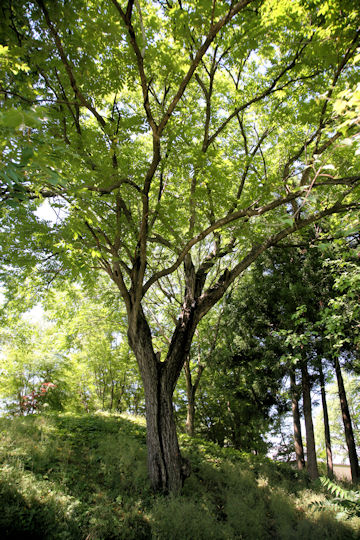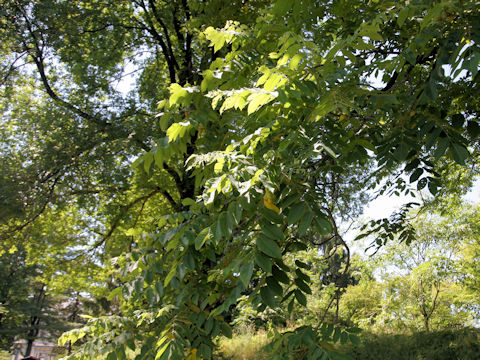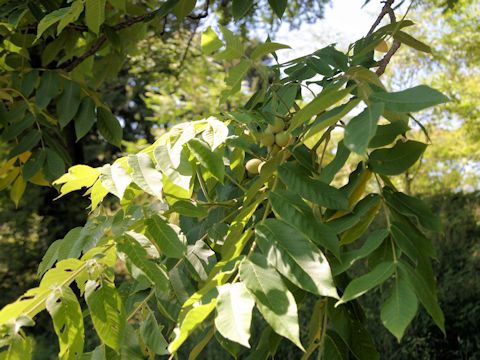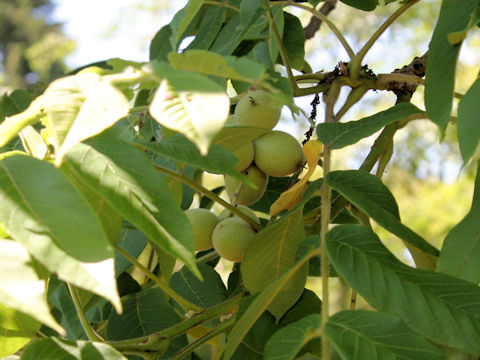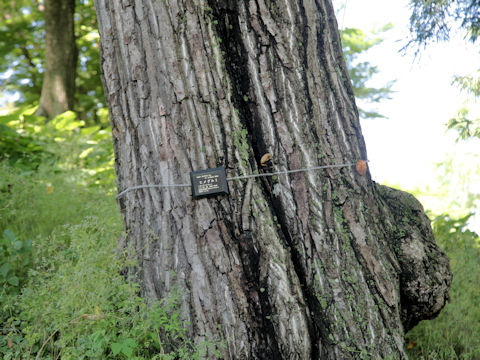
|
The "Hime-gurumi" (Juglans mandshurica var. cordiformis) belongs to Juglandaceae (the Walnut family). It is a tall deciduous tree that is a variant of the "Oni-gurumi" (Juglans mandshurica var. sachalinensis), which is distributed in various parts of Japan as well as in Far Eastern Russia and Sakhalin, and is thought to have no wild species. It grows along rivers in mountainous areas and grows 7 to 10 m high. It has odd pinnate compound leaves with 5 to 9 pairs of small leaves. It is difficult to distinguish it from "Oni-gurumi" in terms of its leaves and trunk. The nuts are characterized by their flattened, wrinkle-free surface. Like the "Shinano walnut", it is cultivated for its thin seed kernel, which is easy to split.
|
